Trulieve Stock Generates Free Cash Flow and Tackles Taxes
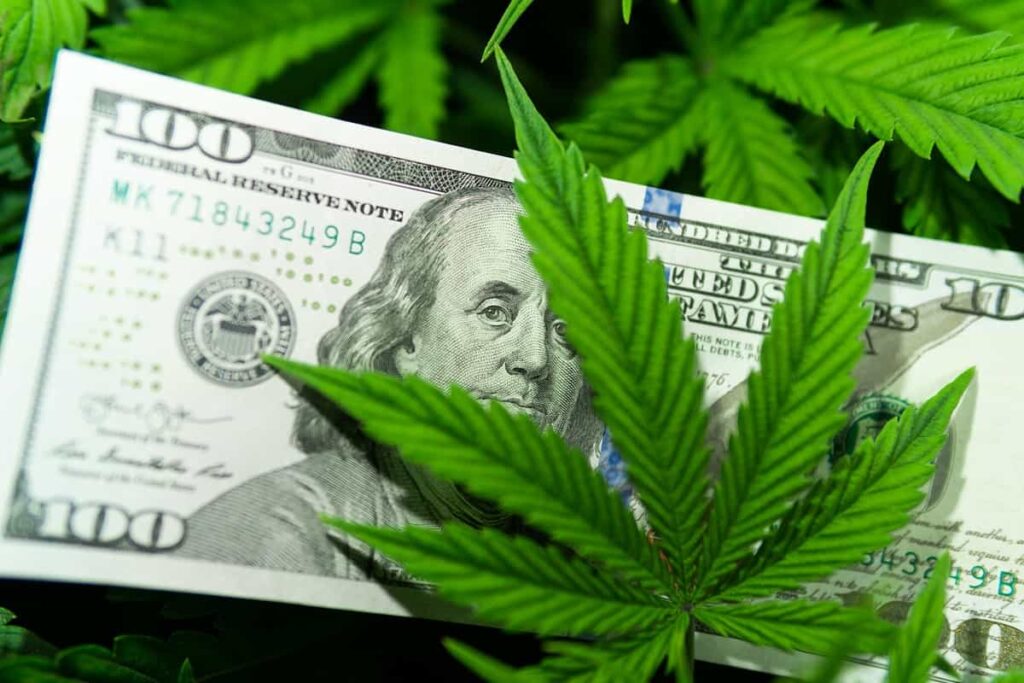
More than five years have passed since cannabis stocks hit record highs, and retail investors who bought into the hype at the time saw their money go up in smoke. Shares of most cannabis companies today are trading for less than the cost of a nickel bag of Mexican dirt weed. The industry overall is in the midst of its first sustained downturn thanks to high retail taxes, an ongoing supply glut, and continued regulatory uncertainty at the federal level, among other factors. Yet as we recently discussed in both an article and video post, there are reasons to be optimistic that the time for a turnaround could be nigh for those who like to get high. No cannabis company better exemplifies both the potential payoffs and the risks as Trulieve (TRUL.CN).
Trulieve Generating Cash Flows Again
One of the biggest multi-state operators (MSO), Trulieve is the only cannabis stock in the Nanalyze Disruptive Tech Portfolio due to the inherent volatility of the industry. And we only pulled the trigger after years of analyzing the best way to invest in cannabis stocks. In our last checkup on Trulieve stock, we concluded that since pot stocks seem to move together as a group, it was less important to select the “best” MSO but rather make sure the anointed company can survive until the U.S. government moves toward legalization – or at least decriminalization. Trulieve appears to be poised to not only survive but thrive when the reins come off federal regulations.
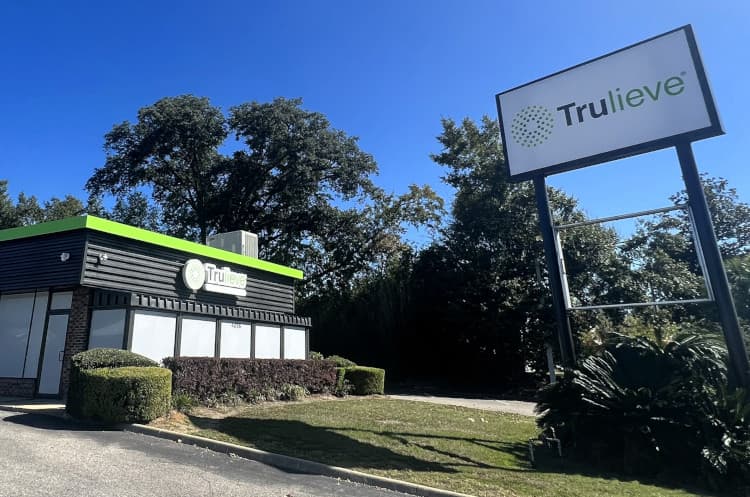
While revenue growth has stalled in 2023 (more on that later), Trulieve management has done an admirable job of shoring up the company’s financials. Last year around this time, the company had just $114 million in cash but more than $550 million in debt. As of Q3-2023, Trulieve had brought its war chest back up to $200 million. It was also on track to generate $100 million in cash flow from operations this year, with at least $70 million free cash flow. A quick reminder: Cash flow is the net amount of dollars a company has coming in and out. Free cash flow is the money that a company generates from its normal business operations after subtracting capital expenditures.
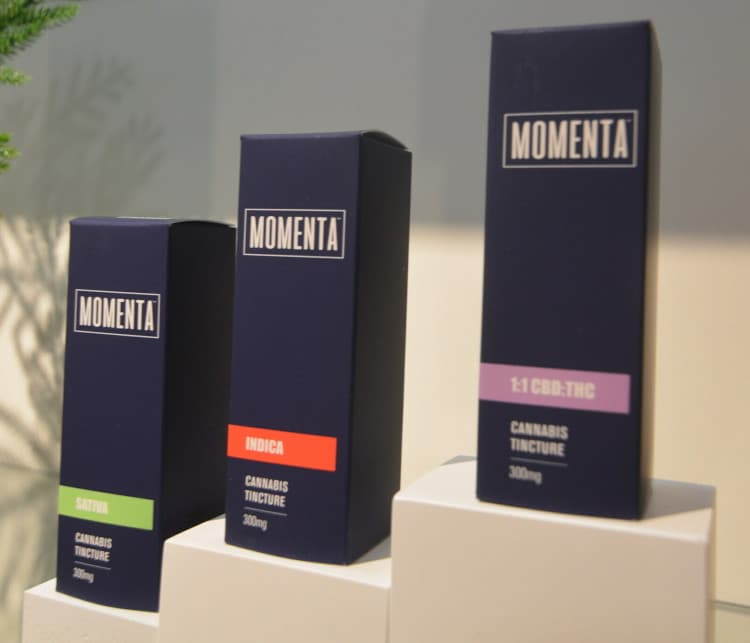
That steady flow of cash is enabling Trulieve to pay down some of its debt on better terms. For instance, earlier this year the company purchased $57 million of its 2026 notes at a 16.5% discount for $47.6 million. More recently, at the beginning of the month, management retired $130 million in debt due next year. Those moves helped shave off about $20 million in interest. In addition, Trulieve cut bait in Massachusetts, closing its three dispensaries earlier this year. It has also exited several losing retail locations in California and pulled out of the wholesale market in Nevada in 2022. These are the unsexy but sane decisions the cannabis company must make to be sustainable for the long term.
Trulieve Takes a Stand Against Tax Provision 280E
And then Trulieve got a little crazy.
Since weed is still classified as a Schedule I drug, cannabis companies are locked out of many benefits enjoyed by most businesses, such as access to bank loans and the ability to conduct interstate commerce (hence the concept of MSOs). In addition, cannabis operators are subject to a little federal tax provision referred to as 280E that prevents them from deducting most business expenses. In effect, cannabis companies pay federal taxes on gross income instead of net income. Cannabis research firm Whitney Economics estimates that cannabis companies paid more than $1.8 billion in additional taxes last year when compared to ordinary businesses because of 280E. The firm forecasts the industry will cough up an additional $2.1 billion in 2023.
The tax burden is so heavy that only 24.4% of cannabis operators surveyed indicated that they are profitable. This is down from 42% the year prior. The effective tax rates often exceed 70% for cannabis retailers.
Whitney Economics
Tax relief could be on the way. Earlier this year, the U.S. Department of Health and Human Services requested that the Drug Enforcement Administration (DEA) reclassify cannabis from Schedule I to Schedule III. That means 280E would no longer apply. Trulieve is not waiting around for the DEA to make it official. The company filed amended federal tax returns for the years 2019 to 2021, claiming a total tax refund of $143 million, as a direct challenge to Section 280E. Moving forward, Trulieve management said it plans to file taxes like any other U.S. business. Kudos to Trulieve for making a bold legal stand but banking on these tax refunds seems premature and risky.
Trulieve Betting Big on Florida Market
Not every cannabis market is experiencing a downturn. In a timely market report, KEY Investment Partners noted that five of the oldest cannabis markets in the United States experienced declining year-over-year revenue in 2022 for the first time since launching recreational sales. On the other hand, states with newly created recreational markets are growing like weeds. In Maryland, which started recreational sales in July 2023, Trulieve doubled its wholesale revenue in Q3-2023 compared to Q1-2023, while retail third-quarter traffic increased 235% and sales per store increased 175% sequentially.
However, Trulieve only operates three dispensaries and one production facility in Maryland. About 80% of its dispensaries are located in medical use-only states, which makes its 2022 revenues of $1.2 billion rather impressive.
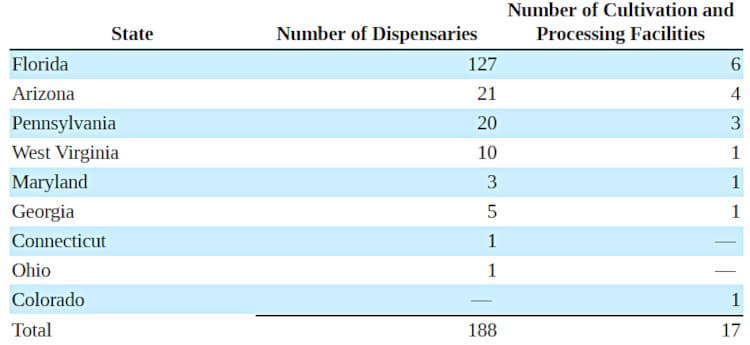
Trulieve management believes the company is well positioned to grab market share when Pennsylvania and Florida – two of its three largest markets – eventually legalize recreational sales. Whether either state will consider legislation next year remains uncertain. While a bill was introduced in the Pennsylvania legislature earlier this year, some Republicans remain opposed until the federal government acts to clear up the haze and confusion. In Florida, the situation is more complex.
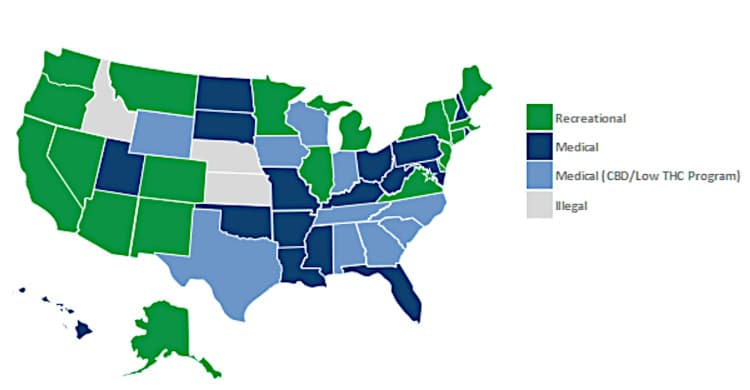
Trulieve is reportedly the main financial backer of Smart & Safe Florida, a political action committee (PAC) that has raised more than $39.5 million to get adult-use legalization on the 2024 ballot. While the PAC has submitted a petition with more than enough signatures, the initiative is being challenged by the state government and chamber of commerce. The issue has gone to the Florida Supreme Court, which heard arguments in November and is expected to rule no later than April 1 on whether the initiative passes muster. The same court shot down a ballot measure in 2021, saying the initiative was misleading. This time, the justices reportedly sounded more amenable based on the language in the new initiative. Even then, voters must approve the measure by 60% for it to pass.
Trulieve Revenue and Gross Margin Fall
At stake is a potential total addressable market (TAM) of $6 billion in Florida, according to Trulieve. That number seems reasonable to us, given that California recorded nearly $5.4 billion in recreational sales in 2022 (and even more on the black market). Florida is the country’s third most populous state, with the largest percentage (21%) of residents over the age of 65. That just happens to be the fastest-growing demographic for cannabis sales. A U.S. government survey found that the share of the over-65 crowd who have used cannabis tripled from 11% in 2009 to 32% in 2019. (Maybe it’s the weed and not Alzheimer’s, after all.)

Still, it’s hard to imagine that stoned seniors will sustain the market in Florida or anywhere else. In the near-term, the company must address falling revenues. In the first nine months of 2023, revenue dropped more than 8% from nearly $920 million in 2022 to about $842 million. There’s not much color behind the decrease except that Trulieve “experienced increased competition and promotional activity in certain markets.” The company also does not break down revenues by state but presumably the drop in retail ($60.5 million) and wholesale ($17 million) revenue is coming from the more mature markets like Florida. The continued decline of gross margin – from 58% in 2022 to 52% in 2023 – is also concerning. Perhaps it all adds up to consumers just being more price conscious.
Conclusion
Trulieve is executing a bold but risky strategy to make the business sustainable into the future. We very much like the focus on growing cash but strongly question the move to stick it to the taxman before the DEA makes a decision on shifting cannabis from a Schedule 1 drug. The U.S. government has dragged its feet for more than a decade since Colorado approved recreational use in 2012, and the glacial pace has not sped up. Similarly, we do not share management’s optimism that both Pennsylvania and Florida are “poised” to legalize adult-use sales. However, the company’s simple valuation ratio (market cap of $1.24 billion/$1.1 billion in annualized sales) of 1 suggests that Trulieve stock is undervalued and could be in for a wild ride in 2024 if all the dominoes fall its way. Of course, that’s a very big “if.”
In the meantime, smoke if you got ’em.







